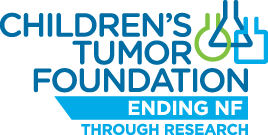In early 2007, one of the gaps CTF identified as part of a strategic review was a need for greater preclinical testing of promising compounds. Before a drug can be approved for a clinical trial, extensive testing must be done in cell lines and animal models to first prove safety, and then establish efficacy. The pipeline for NF related compounds was thin, which drove the Foundation to establish the Drug Discovery Initiative (DDI). This new grant mechanism would provide relatively small amounts of funding to researchers to test compounds in NF cell lines and mouse models.
One of the first DDI applications received was by Dr. Abraham Jacob, then at Ohio State University (OSU). He had been working with new compounds that he believed showed potential for treating NF related vestibular schwannomas. Dr. Jacob’s application for a $27,500 DDI grant to test OSU-03012 in an NF2 mouse model was approved and funded in 2007. The promising results led to follow-on funding of $40,000 from the Triological Society in early 2008 to test combinations of OSU-03012 and OSU-HDAC42.
In late 2008, Ohio State licensed OSU-03012 and OSU-HDAC42 to Arno Therapeutics, a small biotech that saw promise in the compounds for NF2, other solid tumors, and blood cancers. The compounds were renamed AR-12 and AR-42 and work continued through Arno to optimize them. In 2010, Dr. Craig Hofmeister at The Ohio State University Comprehensive Cancer Center began a phase I clinical trial to establish safety in humans with various forms of blood cancer. AR-42 received further testing through the NF Preclinical Consortium (NFPC), which confirmed both the expected safe dosage levels and potential efficacy to treat NF2.
Arno announced in early 2012 that AR-42 had been granted Orphan Drug designation by both the Food and Drug Administration (FDA) in the U.S. and the European Medicines Agency (EMA) in Europe.
In December of 2012, Ohio State received a Clinical Trial Award from the Congressionally Directed Medical Research Program-NF Research Program for a Phase 0 proof of concept study trial of AR-42 in NF2. While it is still a long way from Phase 0 to FDA approval, the story of AR-42 proves that the DDI and NFPC are crucial programs in building the pipeline of drugs for treating NF, and demonstrates the importance of collaborations between academic labs, non-profits, and industry.

